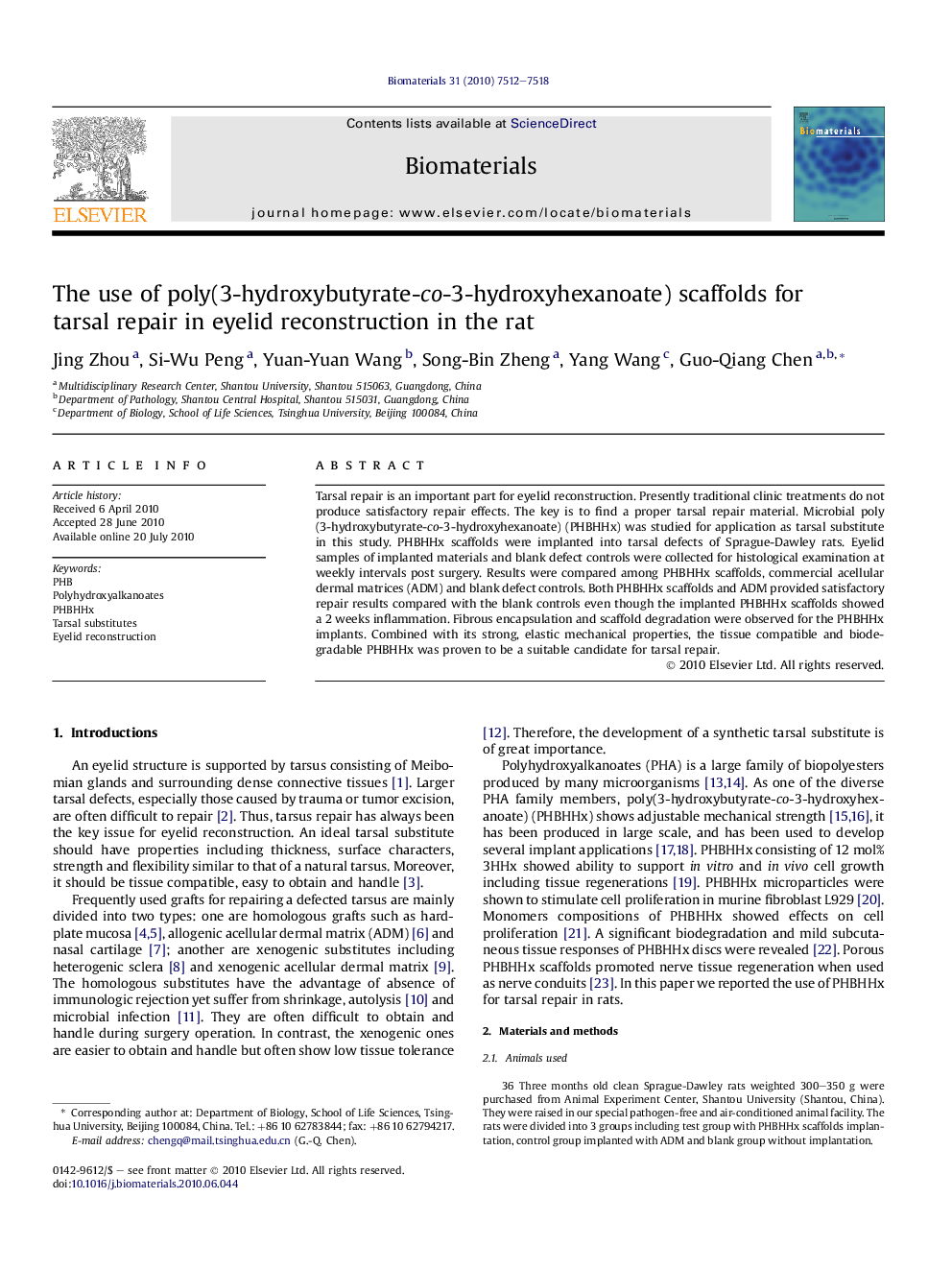| Article ID | Journal | Published Year | Pages | File Type |
|---|---|---|---|---|
| 7858 | Biomaterials | 2010 | 7 Pages |
Tarsal repair is an important part for eyelid reconstruction. Presently traditional clinic treatments do not produce satisfactory repair effects. The key is to find a proper tarsal repair material. Microbial poly(3-hydroxybutyrate-co-3-hydroxyhexanoate) (PHBHHx) was studied for application as tarsal substitute in this study. PHBHHx scaffolds were implanted into tarsal defects of Sprague-Dawley rats. Eyelid samples of implanted materials and blank defect controls were collected for histological examination at weekly intervals post surgery. Results were compared among PHBHHx scaffolds, commercial acellular dermal matrices (ADM) and blank defect controls. Both PHBHHx scaffolds and ADM provided satisfactory repair results compared with the blank controls even though the implanted PHBHHx scaffolds showed a 2 weeks inflammation. Fibrous encapsulation and scaffold degradation were observed for the PHBHHx implants. Combined with its strong, elastic mechanical properties, the tissue compatible and biodegradable PHBHHx was proven to be a suitable candidate for tarsal repair.
